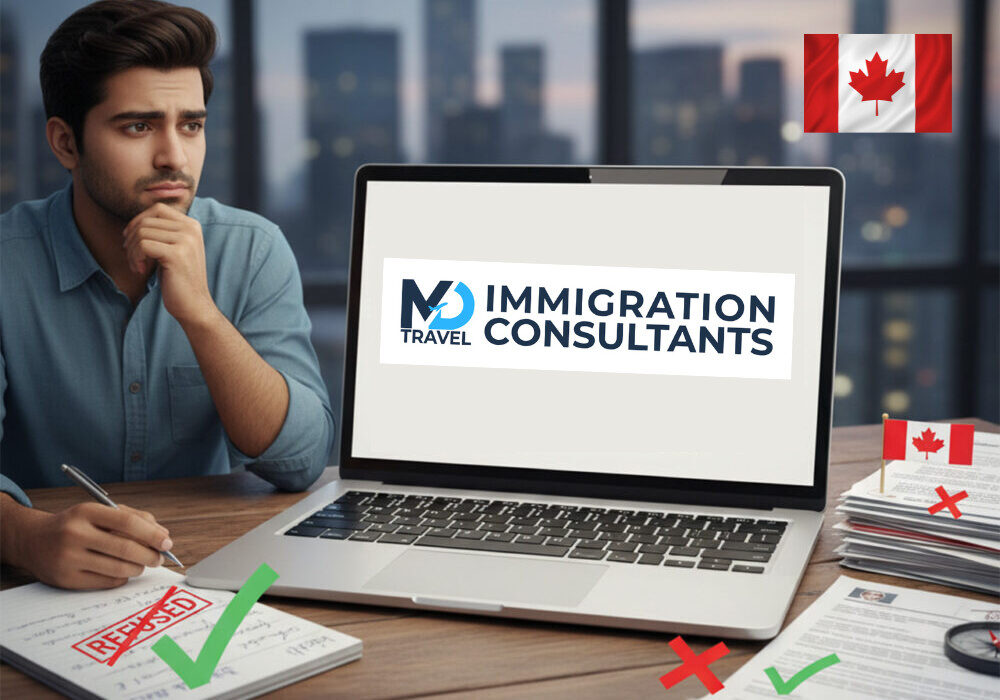Receiving a Canada visitor visa refusal can feel like a door has been permanently closed. However, it’s crucial to understand that a refusal is often a temporary setback, not a final verdict. With a strategic, informed approach, you can address the concerns of immigration officers and significantly increase your chances of approval in your next application.
This comprehensive guide will walk you through the exact steps to take after a refusal and how to build a stronger case for your Canada visitor visa re-application in 2025.
Step 1: Don’t Panic – Understand the “Why”
The first and most critical step is to carefully read the Refusal Letter you receive. This letter will cite the specific sections of Canada’s Immigration and Refugee Protection Act (IRPA) under which your application was denied. Common reasons for refusal include:
- Purpose of Visit: The officer is not convinced your visit is genuine or temporary (e.g., tourism, family visit).
- Financial Resources: You have not demonstrated sufficient funds to cover your trip without working in Canada.
- Current Employment Situation: Your ties to your current job or business appear weak.
- Family Ties in Canada and in Your Country of Residence: The officer believes you have stronger incentives to remain in Canada than to return home.
- Travel History: A lack of international travel history can sometimes be a factor.
Pro Tip: The refusal reason is your roadmap. Your entire re-application strategy must be built around directly addressing this point.
Step 2: Build a Powerful Re-application Strategy
A successful re-application is not about simply resubmitting the same documents. It’s about building a new, stronger case that eliminates the previous doubts.
1. Directly Address the Refusal Reason:
- If “Purpose of Visit” was the issue: Create a highly detailed, realistic day-by-day itinerary. Include confirmed hotel bookings, tour plans, and event tickets. Write a compelling letter of explanation that tells a story of your trip.
- If “Financial Resources” was the issue: Strengthen your bank statements. Show a consistent and healthy balance over a longer period. Avoid large, recent deposits that can’t be explained. Provide documentation for all assets (property, fixed deposits, investments) to show deep-rooted financial stability.
- If “Family Ties” was the issue: Provide overwhelming proof of your need to return home. This includes:
- A letter from your employer confirming your return to your job.
- Proof of enrolment in studies.
- Property deeds or business ownership documents.
- Evidence of immediate family members (spouse, children) remaining in your home country.
2. Strengthen Your Evidence:
- For Employees: Get a stronger employment letter that explicitly states your job title, salary, length of employment, and approved leave for the trip, with a guarantee of your position upon return.
- For Business Owners: Provide business registration documents, tax returns (GST, income tax), and bank statements for the business to prove its stability.
- Add New Evidence: If you’ve travelled internationally since the refusal, include those visas and stamps. This demonstrates a history of compliant travel.
3. The Masterpiece: Your Updated Cover Letter
Your new cover letter is the center piece of your re-application. It must be professional, respectful, and strategic. Structure it like this:
- Acknowledge the Previous Refusal: Start by stating that you are re-applying after a previous refusal. Mention the application date and file number.
- Address the Reasons Head-On: Clearly state the reason for the previous refusal from the letter. Then, present your point-by-point response. “While my previous application did not sufficiently demonstrate my ties to India, I have now included the following evidence…”
- Reiterate Your Strong Ties: Summarize your most powerful connections to your home country.
- Re-state Your Purpose: Clearly explain the genuine purpose of your visit and your commitment to returning before your visa expires.
Frequently Asked Questions (FAQ)
Q: How long should I wait before reapplying?
A: There is no official waiting period. The key is to wait until you have gathered significant new evidence that directly addresses the reasons for refusal. Rushing a new application without fixing the core issues will lead to another rejection.
Q: Can I appeal a Canada visitor visa refusal?
A: Generally, there is no formal appeal process for temporary resident visas (like visitor visas). The most effective path is to correct the deficiencies and submit a new, stronger application.
Q: Should I use the same application forms?
A: No. Always use the most up-to-date versions of the application forms available on the IRCC website. Fill them out completely and accurately.
Conclusion: Why Professional Guidance is Your Best Investment
At MD Travel & Immigration Consultants, we specialize in turning visa refusals into approvals. Our team of experienced immigration consultants conducts a thorough analysis of your case, helps you put your file in order, and works with you to build a powerful, personalized re-application that leaves no room for doubt.
Don’t let one refusal define your journey.
Contact us today for a free, confidential consultation. Let us help you build the strong case you deserve.
Phone: +91-9501060787 | Website: www.mdtravel.in

